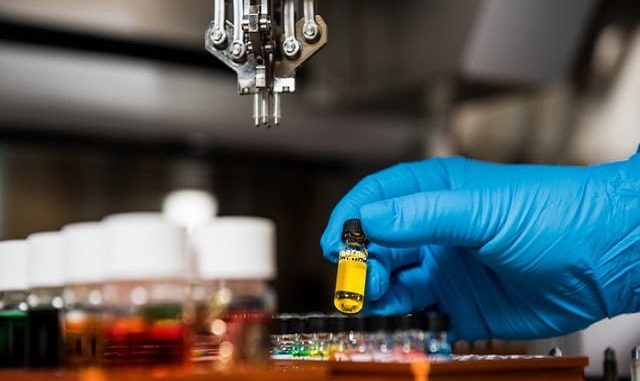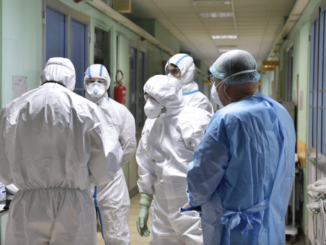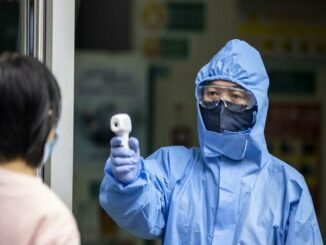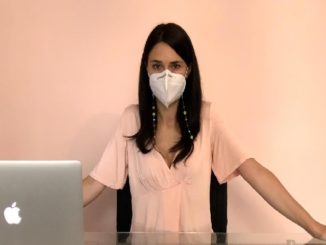
A study envisioning how societies might address the complexities of the COVID-19 pandemic, undertaken by more than 70 leaders in innovation from around the world, is out. It is the largest, nongovernmental study on the virus, and it paints a picture of a world recalibrated by it — with a heavy dependence on data in making people safer. The study titled “Never Normal: A Call to Action to Address the New Realities Posed by COVID-19” is a clear-eyed look at the global future from the social pressure of prolonged separation — especially for young people — to stress in the food chain. The authorship is largely scientific and has been drawn from those who are charged with innovation in their work. These authors, who plan to refine their suggestions and continue their work indefinitely, are banded together as the Cross-Industry Study Group. The group, whose members come from 12 countries (from the United States to Chile to Spain), owes its existence to one man: Omar Hatamleh, a scientist with NASA in Houston.

Hatamleh has been a chief innovation officer at the space agency. For the last four years, he has organized a conference on cross-industry innovation. These conferences were dynamically different than most industry conferences: They did not discuss money or policy. Instead they concentrated on innovation in everything, from the future of buildings to how science is contributing to the creation of new video games, and how innovation is applied at the tech giants like Google and Facebook. They celebrated, as does Hatamleh, exaptation — using an invention for one thing for an unrelated thing, like a medicine for cancer being used for Parkinson’s disease. Hatamleh, the prime mover of the “Never Normal” study, and his deputy in the group, Dimitris Bountolos, a Chilean innovation consultant and former airline executive, drew on the creative talent from these conferences to gather the cross-industry group members and execute the study. The group met remotely — and will continue to meet — in an intense three-week period during which they developed thousands of suggestions and explored as many ideas.
Gradually, they reduced these to two pertinent sections: one that delineates the challenges and the other that identifies the scientific way forward, with an emphasis on data and transparency. “Never Normal” predicts a W-shaped future where there are waves of COVID-19, reflecting governments’ policies and social reaction. It also says the structures for resolution need to be created by governments and shared between them, so that freedom of movement can be restored, and governments do not poach technology and supplies from each other. The study says the best hope for a proven vaccine is 12 to 24 months. It sees a great diminution in recreation — theaters and sports — as we know it. It predicts a digital future with intense social surveillance. It offers no panaceas, no silver bullets. The study is emphatic about sanitation and looks at everything from new air-filtration technology for buildings to monitoring sewage to assess patterns of infection. The sewage does not need to have active virus particles to tell its tale, to show patterns, and to identify trends in infection. The study sees a future where tracking is vital, using things like smart watches and sensors that are becoming ubiquitous with 5G telephone systems.
In one place, the study suggests that coughing can be identified by sensors and can direct authorities to potentially infected people who have not yet sought treatments. The study calls this “catching the cough.” The study points to “air sterilization” as another innovative weapon in the COVID-19 fight. The study states, “There are new nanotechnology-based on laser-induced graphene water filters that eliminate viruses and bacteria in water. This new concept engineered for air filtration could be used in air filters in heating, ventilation and air conditioning or integrated into face masks for a self-sterilizing effect”. This technology, it says, has the potential to be combined with state-of-the-art air filtration such as HEPA filters. Part of the significance of “Never Normal” is that it looks at the scientific contribution to stabilizing the world through a lens other than a purely medical one. Its message: We need all the science we can get.
by Llewellyn King
Lo studio offre innovazione intersettoriale nella lotta COVID-19
È uscito uno studio che prevede come le società potrebbero affrontare le complessità della pandemia di COVID-19, intrapreso da oltre 70 leader nell’innovazione di tutto il mondo. È il più grande studio non governativo sul virus e dipinge un’immagine di un mondo ricalibrato da esso – con una forte dipendenza dai dati nel rendere le persone più sicure. Lo studio intitolato “Never Normal: A Call to Action to Address to the New Realed Posed by COVID-19” è uno sguardo chiaro sul futuro globale dalla pressione sociale della separazione prolungata – specialmente per i giovani – allo stress nel cibo catena. La paternità è in gran parte scientifica ed è stata attinta da coloro che sono accusati di innovazione nel loro lavoro. Questi autori, che intendono perfezionare i loro suggerimenti e continuare il loro lavoro a tempo indeterminato, sono riuniti come gruppo di studio intersettoriale. Il gruppo, i cui membri provengono da 12 paesi (dagli Stati Uniti, dal Cile alla Spagna), deve la sua esistenza a un solo uomo: Omar Hatamleh, uno scienziato della NASA a Houston. Hatamleh è stato un responsabile dell’innovazione presso l’agenzia spaziale. Negli ultimi quattro anni ha organizzato una conferenza sull’innovazione intersettoriale.
Queste conferenze erano dinamicamente diverse dalla maggior parte delle conferenze del settore: non discutevano di denaro o politica. Si sono invece concentrati sull’innovazione in tutto, dal futuro degli edifici a come la scienza sta contribuendo alla creazione di nuovi videogiochi e come l’innovazione viene applicata ai giganti della tecnologia come Google e Facebook. Hanno celebrato, così come Hatamleh, l’espatrio – usando un’invenzione per una cosa per una cosa non correlata, come una medicina per il cancro utilizzata per il morbo di Parkinson. Hatamleh, il motore principale dello studio “Never Normal”, e il suo vice nel gruppo, Dimitris Bountolos, consulente per l’innovazione cileno ed ex dirigente della compagnia aerea, hanno attinto al talento creativo di queste conferenze per riunire i membri del gruppo intersettoriale ed eseguire lo studio. Il gruppo si è riunito in remoto – e continuerà a incontrarsi – in un intenso periodo di tre settimane durante il quale hanno sviluppato migliaia di suggerimenti ed esplorato altrettante idee. A poco a poco, li hanno ridotti a due sezioni pertinenti: una che delinea le sfide e l’altra che identifica la via scientifica da seguire, con un’enfasi su dati e trasparenza.
“Never Normal” prevede un futuro a forma di W dove ci sono ondate di COVID-19, che riflettono le politiche dei governi e la reazione sociale. Dice anche che le strutture per la risoluzione devono essere create dai governi e condivise tra loro, in modo che la libertà di movimento possa essere ripristinata e che i governi non si scontrino con tecnologia e forniture. Lo studio afferma che la migliore speranza per un vaccino comprovato è di 12-24 mesi. Vede una grande riduzione della ricreazione – teatri e sport – come la conosciamo. Prevede un futuro digitale con un’intensa sorveglianza sociale. Non offre panacee, né proiettili d’argento. Lo studio è enfatico sul risanamento e prende in esame tutto, dalla nuova tecnologia di filtrazione dell’aria per gli edifici al monitoraggio dei liquami per valutare i modelli di infezione. Non è necessario che le acque reflue abbiano particelle virali attive per raccontare la loro storia, mostrare schemi e identificare le tendenze dell’infezione. Lo studio vede un futuro in cui il monitoraggio è vitale, usando cose come orologi intelligenti e sensori che stanno diventando onnipresenti con i sistemi telefonici 5G.
In un punto, lo studio suggerisce che la tosse può essere identificata da sensori e può dirigere le autorità verso persone potenzialmente infette che non hanno ancora cercato trattamenti. Lo studio lo chiama “catturare la tosse”. Lo studio indica la “sterilizzazione ad aria” come un’altra arma innovativa nel combattimento COVID-19. Lo studio afferma: “Esistono nuove nanotecnologie basate su filtri per acqua al grafene indotti da laser che eliminano virus e batteri nell’acqua. Questo nuovo concetto progettato per la filtrazione dell’aria potrebbe essere utilizzato nei filtri dell’aria per riscaldamento, ventilazione e condizionamento o integrato nelle maschere facciali per un effetto auto-sterilizzante”. Questa tecnologia, afferma, ha il potenziale per essere combinata con una filtrazione dell’aria all’avanguardia come i filtri HEPA. Parte del significato di “Never Normal” è che esamina il contributo scientifico alla stabilizzazione del mondo attraverso una lente diversa da quella puramente medica. Il suo messaggio: abbiamo bisogno di tutta la scienza che possiamo ottenere.




